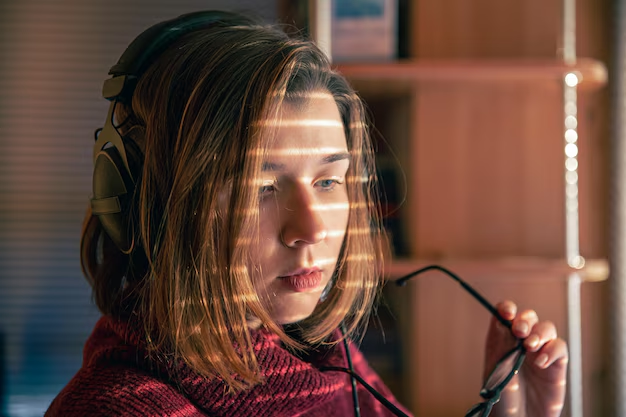Understanding Migraine Aura: A Comprehensive Guide
Imagine waking up to a normal day, only to find your vision blurred by shimmering lights or shapes dancing across your field of view. For many, this is the onset of a migraine aura, a phenomenon that precedes or accompanies migraines and affects a significant number of people worldwide. But what exactly is a migraine aura, and why does it happen?
What Is Migraine Aura?
Migraine aura is a complex set of sensory disturbances that typically occur before a migraine headache. They can affect your vision, other senses, or even your ability to speak. Think of it as a warning sign that your body sends, indicating an impending migraine. These auras can last anywhere from a few minutes to an hour and vary significantly from person to person.
Types of Migraine Auras
Visual Auras:
- Often the most common type, visual auras affect your sight. You might see zigzag patterns, shimmering lights, or even temporary blindness. These phenomena usually appear in both eyes, signaling your brain is the source, not just your eyes.
Sensory Auras:
- These involve tingling or numbness that often starts in the fingers and can move to the face and tongue. It is less common than visual disturbances but can be just as unsettling.
Speech or Language Auras:
- Difficulty speaking or forming coherent sentences can occur, which can be alarming if unanticipated. This type of aura, though rare, is linked to temporary dysphasia, where communication becomes challenging.
Motor Auras:
- Although extremely rare, some individuals experience temporary muscle weakness or paralysis on one side of the body known as hemiplegic migraine.
While these are the main types, every individual's experience with migraines can differ, making it crucial to recognize their unique patterns and triggers.
Why Do Migraine Auras Happen?
The exact cause of migraine auras remains a mystery, although researchers have pinpointed some contributing factors. One prevailing theory is cortical spreading depression (CSD)—a slow-moving wave of neural and glial depolarization that spreads across the brain. This phenomenon is thought to initiate the visual and sensory symptoms of migraine auras.
Genetic and Environmental Factors
Research indicates a genetic component to migraines, as they often run in families. Certain environmental factors such as stress, lack of sleep, and dietary elements also play a role in triggering both migraines and their accompanying auras.
Neurotransmitter Imbalance
An imbalance of neurotransmitters, particularly serotonin, is linked to migraines and their auras. These chemicals help regulate pain and can influence the narrowing and swelling of blood vessels, contributing to migraine attacks.
Recognizing Triggers and Patterns
Identifying and managing personal migraine triggers can be crucial in reducing the frequency and severity of attacks.
Common Triggers
- Dietary Triggers: Caffeine, alcohol, chocolate, and foods with additives like MSG or nitrates can provoke migraines.
- Sensory Triggers: Bright lights, loud sounds, or strong smells may act as triggers for some individuals.
- Environmental Changes: Weather alterations, particularly changes in barometric pressure, can influence migraine onset.
- Hormonal Shifts: Women may experience migraines in conjunction with hormonal changes, particularly around menstrual cycles.
Keeping a Migraine Diary
Logging your migraine occurrences, including the presence of auras, can aid in identifying consistent patterns or triggers. Note the time of day, foods consumed, stress levels, and any aura symptoms to build a clearer picture of your personal migraine blueprint.
Practical Tips for Managing Migraine Aura
While abstract and sometimes alarming, understanding and managing migraine auras can be approached with practical strategies.
Lifestyle Adjustments
- Sleep Regularly: Aim for a consistent sleep schedule to keep your biological clock steady.
- Stay Hydrated: Maintain adequate hydration, as dehydration is a known culprit for migraines.
- Exercise Moderately: Regular, moderate physical activity can reduce migraine frequency over time.
Creating a Healthy Environment
- Lighting: Use low-intensity lighting and reduce screen time to lessen visual strain.
- Sound and Scent: Limit exposure to loud noises and strong odors when possible.
Stress Management
- Relaxation Techniques: Practice meditation, yoga, or deep-breathing exercises to cope with stress.
- Breaks and Rest: Regular breaks during work or activities can prevent overexertion and reduce stress levels.
When to Seek Professional Help
If you experience migraine auras accompanied by severe symptoms like intense headache, confusion, or seizure-like symptoms, consulting a healthcare professional is essential to rule out other medical conditions.
Seeking Diagnosis
A detailed medical history and a thorough neurological exam are often part of diagnosing migraines with aura. In some cases, imaging tests such as an MRI might be performed to exclude other causes of your symptoms.
Discussing Preventive Measures
While medication is outside our purview, discussing preventive treatments with your healthcare provider can be valuable. This conversation can include lifestyle modifications and exploring other therapeutic options tailored to your specific needs.
Final Insights
Migraine auras, for many, are an enigmatic prelude to the pain of a migraine. By embracing a strategy that includes recognizing personal triggers, modifying lifestyle choices, and consulting healthcare providers as needed, individuals can cultivate a path towards more manageable migraine experiences.
Finally, there's power in knowledge. Understanding the nuances of migraine auras not only equips you to handle them better but also fosters a greater sense of control over your health.
Quick Summary of Migraine Aura Insights 📝
- Migraine Aura Types: Visual, sensory, speech, and motor auras. 🌈🗣️
- Primary Causes: Genetic factors, environmental triggers, neurotransmitter imbalances. 🧬🌦️
- Common Triggers: Foods, bright lights, lack of sleep, etc. ☕💡
- Management Tips:
- Maintain a consistent sleep schedule. 🛌
- Stay hydrated and practice relaxation. 💧🧘♀️
- Use a migraine diary to identify triggers. 📓
- When to Seek Help: Severe symptoms warrant professional consultation. 👩⚕️
- Empowerment through Understanding: Recognizing patterns and making informed choices leads to better management of migraines. 💪🎉
Remember, understanding and preparation are your best allies in dealing with migraine auras.
